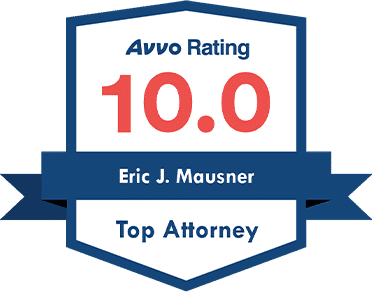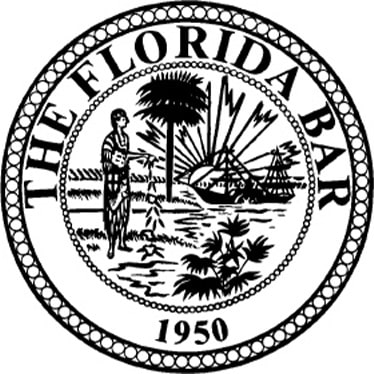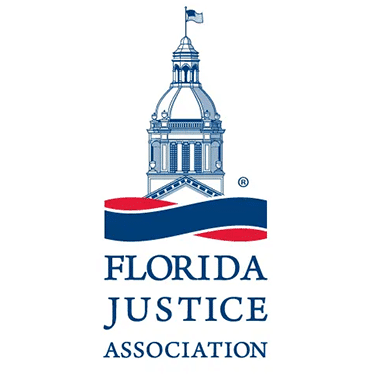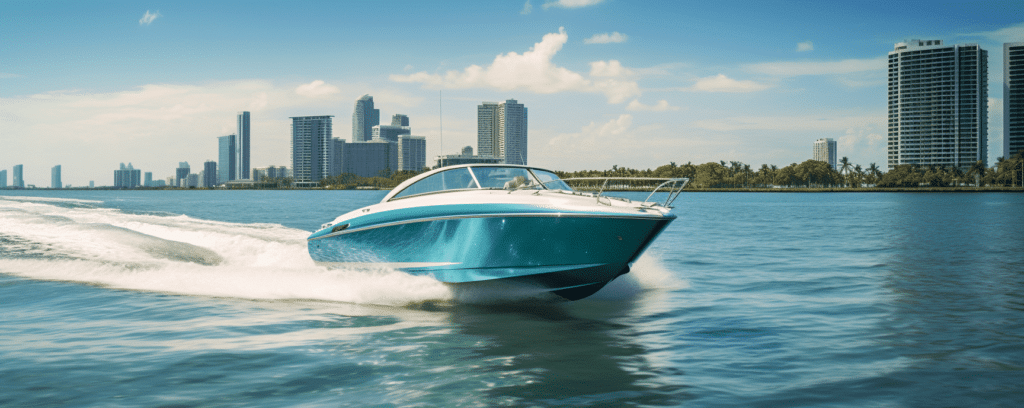
Navigating the waters with confidence requires knowing how to set a safe speed for your vessel. But how do you know when you are operating your vessel at a safe speed? It hinges on a mix of conditions, including weather, water traffic, and local regulations. In this guide, we’ll provide you with the insights and tools you need to make informed decisions about your vessel’s speed, ensuring a safe and enjoyable time on the water without compromising the safety of others and the surrounding environment.
Key Takeaways
- Operating at a safe speed is crucial for safety and environmental preservation, and it should account for weather conditions, water conditions, traffic density, and local speed regulations, including no-wake zones.
- A vessel’s size, handling characteristics, power, and response time significantly influence the determination of what constitutes a safe speed, with larger vessels requiring more power and having slower response times than smaller, more maneuverable vessels.
- Boaters must equip their vessel with mandatory safety gear to maintain optimal control and must recognize signs of unsafe speeds that compromise vessel control, stability, and increase environmental impact.
Contact us today for your free & confidential case review. Our team will help you get the compensation that you deserve.
 Understanding Safe Speed
Understanding Safe Speed
The concept of “safe speed” holds considerable responsibility. It’s not just about sailing at a speed that’s within the law; it’s about sailing at a speed that ensures your safety, the safety of others, and the preservation of our precious marine environment. Maintaining a safe speed is paramount, especially in crowded areas. So, what are the factors that help in determining a safe speed?
Your speed should be a careful balance of:
- Weather
- Water conditions
- Traffic density
- Local regulations
Sudden storms, squalls, and searing heat can all affect the safety of your speed on the water. Similarly, water conditions, such as rough waters during storms or high winds, can significantly influence your speed. Traffic density is another crucial factor as it enables you to consider the presence and concentration of other vessels, allowing you to adapt your speed to prevent collisions and ensure maneuverability. As for local regulations, they are there for a reason, and following them is a sign of a diligent and responsible boater.
Assessing Weather and Water Conditions
Undeniably, the waters of Florida can be unpredictable. One minute it’s smooth sailing, the next minute you’re weathering a sudden squall. But that’s part of the adventure, isn’t it? Weather conditions like fog, rain, and storms can impact visibility and steerage. Wind currents can influence your boat’s maneuverability and have the potential to generate waves and swell, reducing your boat’s speed.
In addition to weather, water conditions can also have a significant impact on your boat’s speed. The position and weight of your boat can affect the volume of water displaced, which in turn affects your speed. Thankfully, there are various tools available that can aid in weather prediction, such as the Predict Wind app and other specialized weather apps for boaters. These tools can help you anticipate the weather conditions and make necessary speed adjustments.
Traffic Density and Navigation Challenges
Imagine this scenario: you’re leisurely cruising under the sunny sky, and suddenly you are in a heavily trafficked area. It’s like hitting rush hour on the water. Traffic density is a significant factor in determining safe boating speed. In areas with heavy boat traffic, adjusting your speed becomes paramount due to the increased risk of collisions and accidents.
In heavily trafficked areas, reducing your speed, or even coming to a stop if necessary, is crucial for maintaining safety. Also, remember to be mindful of your navigation lights. They are not only a legal requirement but also a helpful tool in high-traffic areas, helping you signal your intentions to other boaters and avoid potential accidents.
Local Speed Regulations and No-Wake Zones
While the open water may feel like a realm of freedom, it’s important to remember that it’s also a realm of laws and regulations. Florida, for instance, enforces maximum speed limits of 25 MPH, 30 MPH, and 35 MPH in controlled areas, and it’s crucial to adhere to these posted speed restrictions, especially when navigating through areas abundant with Florida fish. By following Florida law, boaters can ensure a safe and enjoyable experience on the water.
Local regulations also importantly include no-wake zones. These are areas where vessels are required to operate at a speed no higher than what is necessary to maintain steerage and headway. These zones are designed to ensure safety and minimize environmental impact. So, the next time you’re out on the water, make sure you’re aware of, and respect, the local speed regulations and no-wake zones.
The Role of Vessel Size and Handling Characteristics
Anyone who has switched from operating a small speedboat to a large yacht, or the other way around, would understand how the size of your vessel can profoundly affect your speed and handling.
Some key points to consider are:
- Larger vessels may require more propulsion to reach desired speeds
- The length of a boat can influence its maximum speed
- The handling of smaller boats depends on your experience and understanding of the boat’s specific characteristics, such as maintaining steerage and utilizing prop-walk.
The maneuverability and response time of your vessel are also affected by its size. Increasing rudder dimensions can lead to a decrease in response time and overshoot, while higher ship speed can result in reduced response time but increased overshoot. It’s vital to understand these characteristics of your vessel, as they can help you operate at a safe speed, particularly in congested vessel traffic areas.
Maneuverability Considerations
Determining a safe speed significantly hinges on your boat’s maneuverability. Increased boat speed can impact maneuverability, leading to the need to find a balance between efficiency and safety. For instance, a boat with a planing hull that generates hydrodynamic lift can reach higher speeds. However, deep V hulls may have reduced maneuverability at low speeds but demonstrate superior handling during high-speed turns and in challenging sea conditions.

- Underwater hull geometry
- Pivot point
- Lateral motion
- Propeller
- Rudder
- Thrust vectoring
Additionally, the size and weight of your boat can also affect its maneuverability. Generally, heavier boats tend to be slower, whereas longer boats may exhibit greater speed and tracking capabilities.
Being aware of these factors can help you avoid collisions and enhance your boating experience.
Power and Response Time
When determining a safe speed, power and response time are two other important characteristics to consider. Boats with higher power, particularly in terms of torque, generally exhibit a swifter response time in accelerating. Moreover, different propulsion systems, including:
- diesel
- wind
- gas
- solar
Boat propellers possess distinct characteristics and performance capabilities that can influence your boat’s acceleration and maneuvering speed, which can be determined through a physical or chemical test.
The size and weight of your vessel can also significantly influence its power and response time. Larger vessels may possess greater power but slower response times, whereas smaller vessels tend to be more maneuverable with quicker response times. Understanding your boat’s power and response time can help you make educated decisions about safe speeds, especially in situations where quick maneuvering might be necessary.
Contact us today for your free & confidential case review. Our team will help you get the compensation that you deserve.
Safety Equipment Required for Optimal Control
Understanding your vessel and safe navigation are vital aspects of boating, but equipping your boat with the required safety gear is of equal significance. Boat owners and operators have a legal responsibility to possess, store, and utilize the safety equipment mandated by federal safety equipment regulations, as endorsed by the U.S. Coast Guard. This includes ensuring the presence of appropriate gear such as Personal Flotation Devices and distress signals on the vessel.
Safety equipment aids not only during emergencies but also enhances the optimal control of your vessel. Some essential safety equipment includes:
- Navigation lights
- Compasses
- Life jackets
- Personal flotation devices
These tools help you navigate safely and can save lives in the event of an accident.
Personal Flotation Devices and Life Jackets
When it comes to boating, wearing a life jacket is as fundamental as wearing a seatbelt in a car. Boats are required to carry a range of personal flotation devices and life jackets, including:
- Offshore Life Jackets
- Near-Shore Vests
- Flotation Aids
- Throwable Devices
- Additional options such as sailboard harness, deck suit, paddling vest, and float coats
These safety devices are designed to keep you afloat in the water, buying you valuable time until help arrives.
Choosing the right personal flotation device or life jacket depends on the type of activity or boating conditions, sizing and fitting, and the decision between a standard PFD or an inflatable one. So, whether you’re cruising on a yacht, speeding on a personal watercraft, or leisurely paddling in a canoe, always wear a life jacket. As the saying goes, “The best life jacket is the one you wear.”
Engine Cut-off Devices and Kill Switches
Engine cut-off devices and kill switches, safety features designed to stop the boat’s engine if the operator is ejected or unable to operate it. These devices play a pivotal role in enhancing safety by preventing accidents and ensuring proper management of the vessel.
Lanyard kill-switches, electronic engine cut-off devices, and emergency cut-off switch lanyards are options available for boat operators. By establishing a direct link between the captain and the engine, these switches activate, leading to the shutdown of the engine when the captain moves beyond a certain distance from the controls. Bypassing these safety measures can significantly increase the risk of runaway boat accidents, collisions, and injuries.
Recognizing Signs of Unsafe Speed
Understanding safe speeds and ensuring your boat is equipped with necessary safety gear is vital, but recognizing signs of unsafe speed is just as important. Unsafe speed can have a detrimental impact on vessel control and stability by elevating the likelihood of accidents, such as collisions or capsizing.
Indicators of unsafe speed include:
- Operating at excessive speeds that pose a danger to others or their property
- Inability to bring the vessel to a stop within a safe distance
- Operating at a speed that is not prudent given external factors such as traffic, weather, visibility, water depth, the presence of other boats, and areas with obstacles.
By recognizing these signs and adjusting your speed accordingly, you can ensure a safe and enjoyable boating experience.
Effects on Vessel Control and Stability
High-speed operation can influence multiple aspects of your boat’s control and stability. Increased speeds can lead to the need for more time and distance to execute a turn due to momentum and water resistance. This could result in a larger tactical diameter, impacting the vessel’s handling.
Moreover, high-speed operation can compromise stability, especially in smaller boats, due to the movement of the water. It’s crucial to understand these effects and adjust your speed accordingly to maintain control of your boat and prevent potential accidents.
Wake Impact and Environmental Considerations
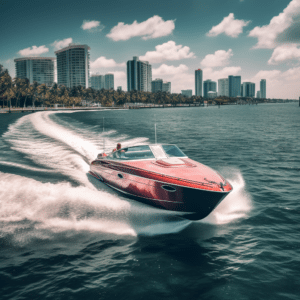
- Sediment resuspension
- Discharge of litter
- Increased light emissions
- Disruption to fish habitats
- Potential injury to wildlife
- Damage to the boat itself
Your boat’s speed directly affects the wake it generates. As the vessel’s speed increases, the wake expands both in width and speed, altering the wake angle and potentially creating dangerous situations for other vessels and individuals in the water. By recognizing the environmental impact of your wake and adjusting your speed accordingly, you can enjoy your boating adventure while also protecting our precious marine environment.
Boating Safety Education: Course Completion and Best Practices
Boating is enjoyable, yet it carries a responsibility. Just like driving a car, operating a boat requires knowledge, skills, and a respect for the rules of the water. This is where boating safety education comes in. Whether you’re a seasoned sailor or a weekend warrior, a boating safety course can provide you with the knowledge and skills you need to operate your vessel safely and responsibly.
Boating safety education goes beyond covering the basics of boat operation and safety, providing a comprehensive understanding of:
- Navigation rules
- Emergency procedures
- Weather conditions
- Equipment maintenance
- Proper use of safety equipment
Even if it’s not legally mandated, every boater can benefit from an approved safe boating course, as it provides formal training in boating safety and navigation.
Importance of Formal Training
Formal boating safety and navigation training impart an understanding of:
- Basic boating terminology
- Safety protocols
- Navigation markers
- Boat handling
- Etiquette
- Waterway regulations
This knowledge enables boaters to prevent boating accidents, including reportable boating accident instances, and promotes an approved safe boating experience.
Formal training also equips boaters to handle emergency situations by imparting safety tips, specific emergency procedures pertinent to the vessel, and enabling operators to react promptly, including administering first aid and CPR when necessary. Various reputable organizations such as Boat Ed, the U.S. Coast Guard, BoatUS, and Boater’s Academy offer formal training courses for boating safety.
Applying Knowledge to Real-World Scenarios
Completing a boating safety course is merely the beginning. The real test comes when you apply what you’ve learned to real-world scenarios on the water. From encountering another boat to navigating in various weather conditions and handling emergency situations, the knowledge you gain from a safety course can help you navigate these scenarios safely and confidently.
Simulation-based training programs are also available to apply boating safety knowledge to real-world scenarios. These programs, such as the Boating Skills Virtual Trainer™, CME courses utilizing simulation technology, and Virtual Marine’s safety training simulators, can provide hands-on experience and further enhance your boating safety knowledge and skills.
Contact us today for your free & confidential case review. Our team will help you get the compensation that you deserve.
Navigating Common Boating Scenarios
Every day on the water is unique. From serene sunsets to sudden squalls, from a solitary sail to a bustling regatta, every boating scenario is unique. However, there are some common scenarios that every boater should be prepared for, such as:
- Adherence to Navigation Rules to prevent collisions
- Acquisition of fundamental boat navigation skills
- Utilization of sound signals for communication with fellow boaters
Maintaining speed control is a highly effective method to safely navigate these scenarios. Whether you’re approaching a dock or marina, encountering large commercial vessels, or navigating through heavy boat traffic, maintaining a safe and controlled speed is crucial for your safety and the safety of others.
Approaching Docks and Marinas
While approaching a dock or marina might appear simple, it can turn challenging when wind or current conditions come into play. When the wind or current is causing the boat to move away from the dock, it’s advisable to approach at a controlled speed and at an angle greater than 45°. Remember, speed control plays a crucial role in safe navigation in these scenarios.
The size of your boat can also affect your approach. Larger and heavier boats may pose greater difficulty in control during the docking process. So, it’s important to understand your boat’s handling characteristics and adjust your speed and approach accordingly.
Handling Waves and Wakes from Other Vessels
Every boater should be prepared for another common scenario: dealing with waves and wakes from other vessels. Encountering a wave or wake at a slight angle rather than head-on or at a broadside allows the vessel to more smoothly ride up and over it, ensuring better stability and control of the vessel.
The size and design of your vessel can also impact its response to waves and wakes generated by other boats. Understanding these factors and adjusting your speed and approach accordingly can help you navigate these scenarios safely and confidently.
Enforcement Officer Interactions
Similar to roads, law enforcement officers patrol waterways, ensuring everyone’s safety and compliance with boating laws and regulations, including federal and state law. It’s crucial to comply with these officers and respect the laws of the water, as enforced by the wildlife conservation commission.
In Florida, individuals convicted of boating infractions are mandated to complete a Florida approved boater education course, which includes Florida approved boating safety guidelines. Failure to complete the mandated course subsequent to a conviction results in a suspension of the privilege to operate a vessel until proof of course completion is submitted. So, it’s always better to be safe than sorry and follow the rules of the water.
Frequently Asked Questions
How do you know when you are operating your vessel at a safe speed boat?
You can determine a safe speed for your boat by considering factors such as visibility conditions, wind and water conditions, currents, traffic density, and the type of vessels in the area. These factors will help you operate your vessel at a safe speed.
What must you understand to determine a safe speed?
To determine a safe speed, you must understand factors such as visibility, traffic density, vessel maneuverability, stopping distance, turning ability, and other environmental conditions, which all play a crucial role in ensuring safe and efficient navigation.
What are some boating safety tips?
Prioritize safety by wearing life jackets, carrying emergency supplies, and ensuring operable boat lights before heading out on the water. Being prepared and following safety guidelines is crucial to a successful boating trip.
How does the size of a vessel impact its speed and maneuverability?
The size of a vessel can impact its speed and maneuverability, with larger vessels requiring more propulsion for speed and the length of a boat influencing its maximum speed.
What are the legal obligations of boat owners and operators in relation to safety equipment?
Boat owners and operators must have and maintain the safety equipment required by federal regulations, as mandated by the U.S. Coast Guard. Compliance is a legal responsibility.
Last updated Tuesday, July 16th, 2024

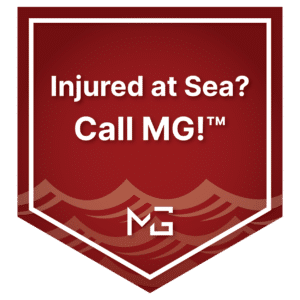 Understanding Safe Speed
Understanding Safe Speed
